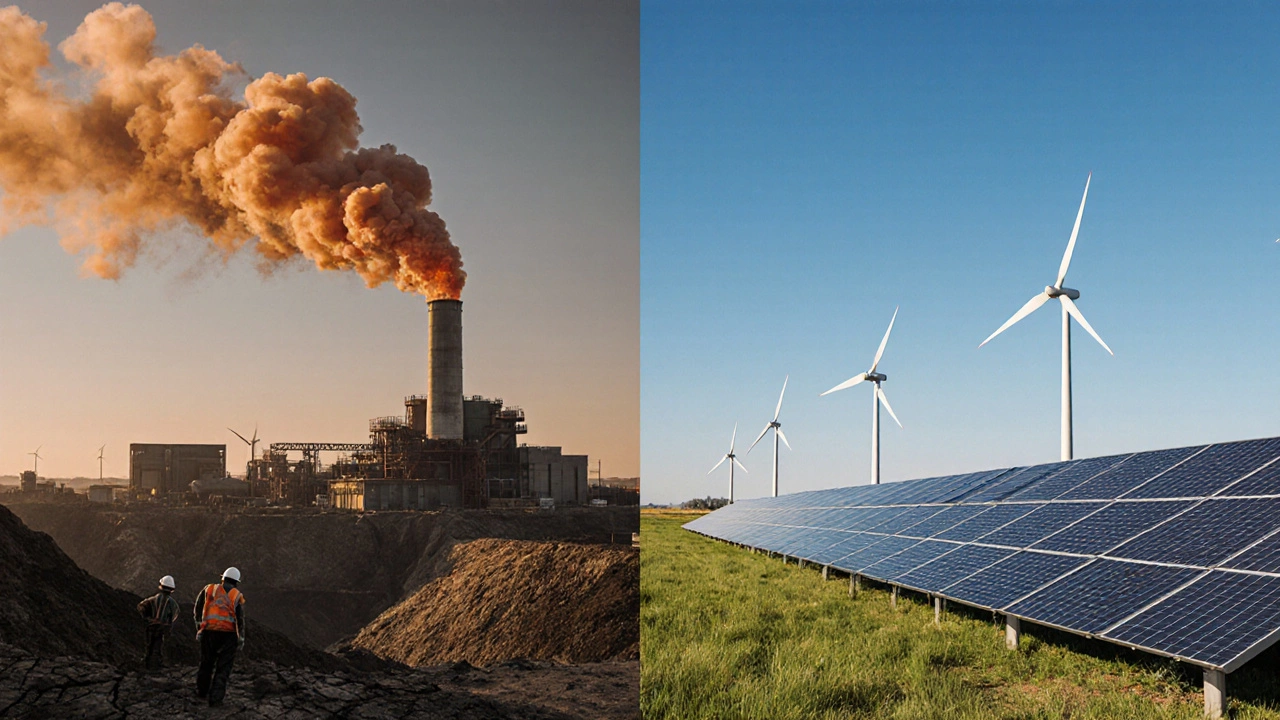Energy Fatality Rate: What It Means and How It Shapes India's Clean Energy Push
When we talk about energy fatality rate, the number of deaths caused directly or indirectly by energy production per unit of electricity generated. It’s not just a statistic—it’s a measure of how safely we power our homes, hospitals, and factories. Most people assume nuclear or coal are the deadliest, but the real picture is more surprising. Studies from the World Health Organization and the International Energy Agency show that coal power kills far more people than any other source—not from explosions, but from air pollution. Tiny particles from burning coal get into lungs, cause heart disease, strokes, and lung cancer. In India, where coal still makes up over 70% of electricity, this isn’t theoretical. It’s daily life in cities like Delhi and Patna, where respiratory illnesses spike every winter.
The renewable energy safety, the low risk of death linked to generating power from wind, solar, and hydro sources. Also known as clean energy mortality rate, it’s dramatically lower because these sources don’t burn fuel or release toxins. Wind and solar have fatality rates close to zero per terawatt-hour—mostly from falls during installation or maintenance. Compare that to coal, which has a fatality rate over 100 times higher. Even nuclear, often feared, has a lower death rate than wind when you count accidents and long-term emissions. This isn’t opinion. It’s data from peer-reviewed journals like The Lancet and the U.S. National Academy of Sciences. And it’s why countries switching to renewables aren’t just saving money—they’re saving lives.
India’s energy choices aren’t just about climate targets or subsidies. They’re about whether a child in rural Bihar grows up with healthy lungs, or whether a farmer in Punjab dies early from chronic bronchitis caused by nearby coal plants. The energy policy, the set of laws, incentives, and regulations that determine how energy is produced and distributed. Also known as power sector governance, it’s the hidden force behind every power line, every solar panel, every coal mine. When policy favors coal because it’s familiar or politically convenient, it’s not just an economic decision—it’s a public health failure. But when policy pushes for solar and wind, it’s not just clean energy—it’s preventive medicine. And that’s why the posts you’ll find here matter. They don’t just talk about tech or prices. They show you how energy choices connect to real human outcomes—from the scientist designing safer battery storage to the public health worker tracking asthma cases near power plants. You’ll read about how solar growth in Rajasthan is cutting pollution-related deaths, how biotech is helping monitor air quality in real time, and why the cleanest energy isn’t just the cheapest—it’s the one that keeps people alive.




